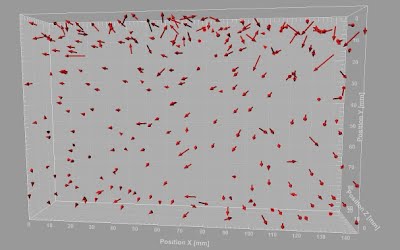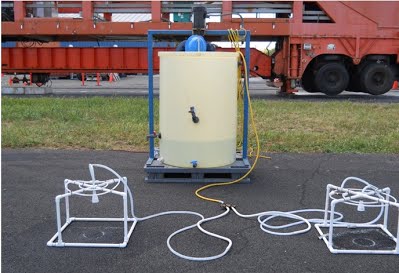Micromechanical Investigation of Porous Asphalt Friction Courses' Rutting and Clogging Mechanisms
This study aims to identify the permanent deformation and clogging mechanisms of open graded friction course (OGFC) mixes under full-scale loading.
In order to investigate the rutting mechanisms, changes in OGFC and underlying dense graded asphalt concrete (DGAC) layers' microstructures under full scale trafficking were determined using X-ray computed tomography (CT) images taken before and after accelerated pavements tests (APT). Image processing and particle tracking methods were used to identify changes in air-void and aggregate distributions to evaluate the rutting mechanisms of multi-layered (OGFC on DGAC) asphalt concrete sections (Fig.1 and Fig.2).
The OGFC clogging investigations were performed: (1) under the rainfall simulation (particle-related) without trafficking (Fig.3) and (2) under full-scale accelerated pavement rutting (rutting-related) testing. The rainfall simulation was performed with runoff water of known total suspended solids and particle size distributions (PSDs). Full-scale rutting APT was performed under controlled temperature and loads. Both investigations were performed for three different OGFC mix types. The clogging of rutting test areas were evaluated by comparing the surface permeability measurements before and after APT test as well as comparing the X-ray CT scan porosity profiles of three core specimens. The particle-related clogging was evaluated by comparing the X-ray CT scan porosity profiles of six core samples before and after rainfall simulations.

Fig.1 Segmented air voids in asphalt concrete

Fig. 2 Distribution of displacement vectors

Fig. 3 Rainfall simulator used for clogging investigation
Published papers: